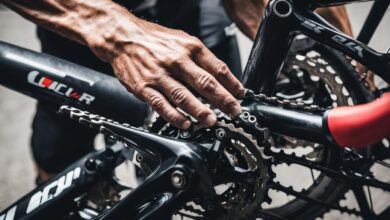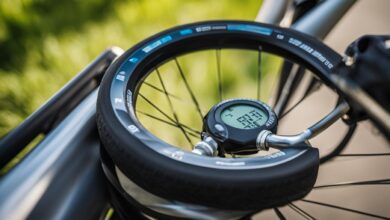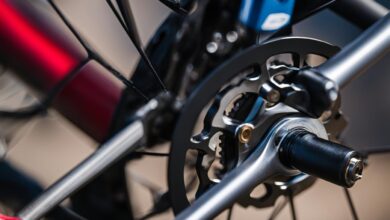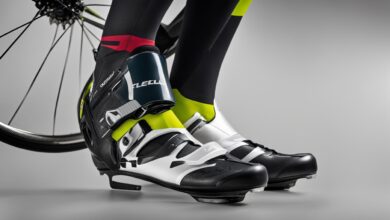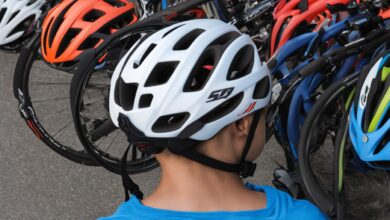Maximize Durability with Tips for Long-lasting Bike Tires
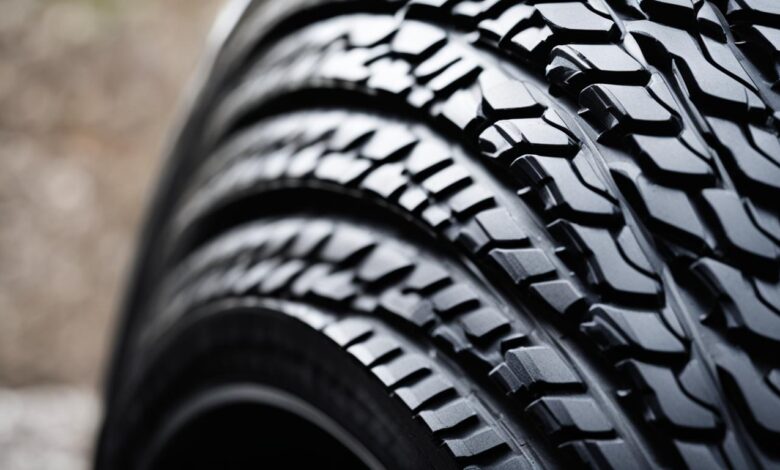
When it comes to bike tire maintenance, taking proper care of your tires is essential to ensure their longevity and performance. By following a few simple tips, you can extend the lifespan of your bike tires, avoid unnecessary wear and tear, and enjoy a smooth and safe ride.
Choosing durable bike tires is the first step towards maximizing their lifespan. Look for tires that are designed for your specific riding style and terrain. Consider factors such as tread pattern, compound, and bead to ensure optimal performance and durability.
Once you have the right tires, there are several best practices you can follow to keep them in top condition. Maintaining the proper tire pressure is crucial for long-lasting performance. Underinflated tires can increase rolling resistance and cause premature wear, while overinflated tires can lead to a harsh ride and potential blowouts. Regularly check and adjust the tire pressure according to the manufacturer’s recommendations.
Tire rotation is another important practice that can help increase the longevity of your bike tires. By swapping the front and rear tires periodically, you can distribute the wear evenly and ensure balanced performance. This simple step can significantly extend the lifespan of your tires.
Proper tire storage is essential, especially when your bike is not in use for an extended period. Hang your bike up in storage and keep the tires inflated to prevent flat spots and maintain their shape. Additionally, store your bike in a dry and cool environment to avoid exposure to excessive heat or moisture, which can deteriorate the tire rubber.
Preventing tire wear and tear is crucial for their long-lasting performance. Avoid riding on rough or uneven surfaces whenever possible and be cautious of sharp objects that can puncture or damage your tires. Regularly inspect your tires for any signs of wear, such as tread thinning or sidewall damage, and address them promptly.
By implementing these tips for long-lasting bike tires and adopting a proactive approach to tire maintenance, you can enhance the durability of your tires, enjoy optimal performance, and minimize the need for frequent replacements.
Key Takeaways:
- Choose durable bike tires suitable for your riding style and terrain
- Maintain the proper tire pressure for optimal performance
- Rotate your tires regularly to distribute wear evenly
- Store your bike in a dry and cool environment to prevent deterioration
- Inspect your tires regularly and address any signs of wear or damage promptly
Clean your bike regularly
Cleaning your bike regularly is essential for maintaining its performance and increasing the lifespan of its components. By incorporating a regular cleaning routine into your bike maintenance, you can prevent rust, ensure optimal functionality, and extend the durability of your bike’s components.
Make it a habit to clean your bike at least once a week in the summer and after every ride in the winter. This regular cleaning practice will help remove dirt, grime, and debris that can accumulate and potentially damage your bike over time.
To clean your bike effectively, start by wetting the bike with water. This will soften any dirt or mud stuck to the frame, making it easier to remove. Next, focus on cleaning the chain, which is an important component that requires special attention.
Use a degreaser specifically designed for bike chains to remove any built-up dirt and old lube. Gently scrub the chain with a brush to ensure a thorough cleaning. Rinse the chain with water and dry it thoroughly to prevent rust.
After cleaning the chain, move on to cleaning the rest of your bike. Use a bike-specific cleaner or mild soap diluted in water to clean the frame, wheels, and other components. Pay attention to hard-to-reach areas, such as between the gear cogs or brake calipers, to ensure a complete cleaning.
Once you have thoroughly cleaned your bike, dry it off with a clean towel or let it air dry. This step is crucial to prevent water from sitting on the bike and causing rust or corrosion.
After the bike is dry, it’s time to lubricate the chain. Apply a quality chain lube to the chain, ensuring that each link is adequately lubricated. This will help reduce friction, prevent rust, and extend the life of your chain.
By following these simple steps to clean and maintain your bike regularly, you can ensure that it performs optimally and that its components last longer. Remember that prevention is key when it comes to bike maintenance, and a clean bike is a happy bike.
Maintain your chain
Regularly cleaning your chain is crucial for its longevity and the lifespan of other components on your bike. A clean and well-lubricated chain ensures smooth shifting and efficient power transfer, enhancing your overall riding experience. Follow these steps to properly maintain your bike chain:
- Clean the chain: Start by removing any dirt, grime, and old lubricant from the chain. Use a chain cleaning tool or a rag soaked in a suitable chain degreaser to scrub the chain thoroughly.
- Inspect for chain wear: Use a chain wear checker to assess the condition of your chain. If the chain is stretched and shows signs of significant wear, it may need to be replaced to prevent further damage to the cassette and chainrings.
- Lubricate the chain: After cleaning, apply a high-quality chain lubricant to the chain. Choose a lubricant specifically designed for the weather conditions you’ll be riding in (wet, dry, or all-weather). Ensure the lubricant reaches all the chain’s links and rollers, and wipe off any excess to prevent attracting dirt and debris.
Regular chain maintenance, including cleaning and lubrication, will help minimize chain wear, reduce friction, and improve overall drivetrain efficiency. Perform these steps at regular intervals to keep your chain functioning optimally.
| Benefits of Chain Maintenance | Consequences of Neglecting Chain Maintenance |
|---|---|
|
|
Check your brake pads
Regularly checking your brake pads is essential for maintaining effective braking and preventing premature wear on your disc brake rotors or wheel braking surface. By monitoring the remaining pad material, you can ensure that your brakes are in optimal condition for safe and efficient stopping power.
Start by inspecting the brake pads for wear. If the pad material is worn down to 1.5mm or less, it’s time to replace them. Using worn brake pads can cause damage to the rotor or wheel surface, leading to reduced braking performance.
To clean the brake pads, remove the wheel and gently wipe the braking surface with a clean cloth or a soft brush. This will remove any dirt or debris that may have accumulated and ensure maximum contact between the pads and the rotor or wheel surface. Avoid using any harsh chemicals or solvents as they can contaminate the pads and compromise their effectiveness.
It’s also important to prevent brake pad contamination. Avoid touching the braking surface or the pad material with your hands, as oil or grease from your skin can reduce the friction between the pads and the rotor or wheel. If you accidentally touch the pads, clean them with isopropyl alcohol before reinstalling.
Pro Tip: If you notice any unusual noise, vibration, or a decrease in braking performance, check your brake pads immediately. These signs can indicate excessive wear or contamination that requires attention.
By regularly checking your brake pads, cleaning the braking surface, and preventing pad contamination, you can maintain optimal braking performance and ensure your safety on the road or trail.
Signs of Brake Pad Wear
| Signs of Brake Pad Wear | Action Needed |
|---|---|
| Squealing or screeching noise | Check brake pads and replace if worn |
| Reduced braking power | Check brake pads and replace if worn |
| Vibration or pulsation when applying brakes | Check brake pads and replace if worn |
| Visible wear on brake pad material | Replace brake pads |
Look after your cables
Proper maintenance of gear and brake cables is crucial for ensuring optimal performance and a smooth riding experience. Neglecting cable care can result in issues such as decreased shifting accuracy and braking efficiency. To keep your cables in top shape, follow these essential maintenance tips:
1. Use dry lube for exposed cable sections
Apply dry lube to the exposed sections of your gear and brake cables. Dry lubes create a protective barrier that reduces friction, prevents moisture buildup, and keeps the cables operating smoothly. Regularly reapply the dry lube, especially after wet rides or when you notice any signs of cable friction.
2. Replace frayed or damaged cables
Inspect your cables regularly for any signs of fraying, corrosion, or damage. Frayed or damaged cables can compromise your bike’s performance and safety. If you notice any issues, it is essential to replace the affected cables promptly. This ensures that your gears shift accurately and your brakes respond reliably.
3. Consider upgrading to higher-quality cables
Investing in higher-quality cables can significantly improve your bike’s performance and durability. Higher-quality cables are made with superior materials that offer increased strength, flexibility, and resistance to wear. These cables provide smoother shifting and braking, enabling you to enjoy a more responsive and efficient riding experience.
4. Regularly replace the inner cable
The inner cable is the part of the cable that transfers your shifting or braking input to the derailleurs or brake calipers. Over time, the inner cable may stretch, fray, or accumulate dirt, causing shifts to become less precise or brakes to feel less responsive. Regularly replacing the inner cable, especially in all weather conditions, ensures optimal performance and prevents any potential issues.
5. Consider fully sealed cables for external cable routing
For bikes with external cable routing, consider using fully sealed cables. Fully sealed cables provide an additional layer of protection against moisture, dirt, and other contaminants. This helps maintain smooth cable operation and reduces the risk of cable friction and premature wear. Fully sealed cables are particularly beneficial for bikes used in adverse weather conditions or off-road riding.
“Proper maintenance of gear and brake cables is essential for optimal performance and a smooth riding experience.”
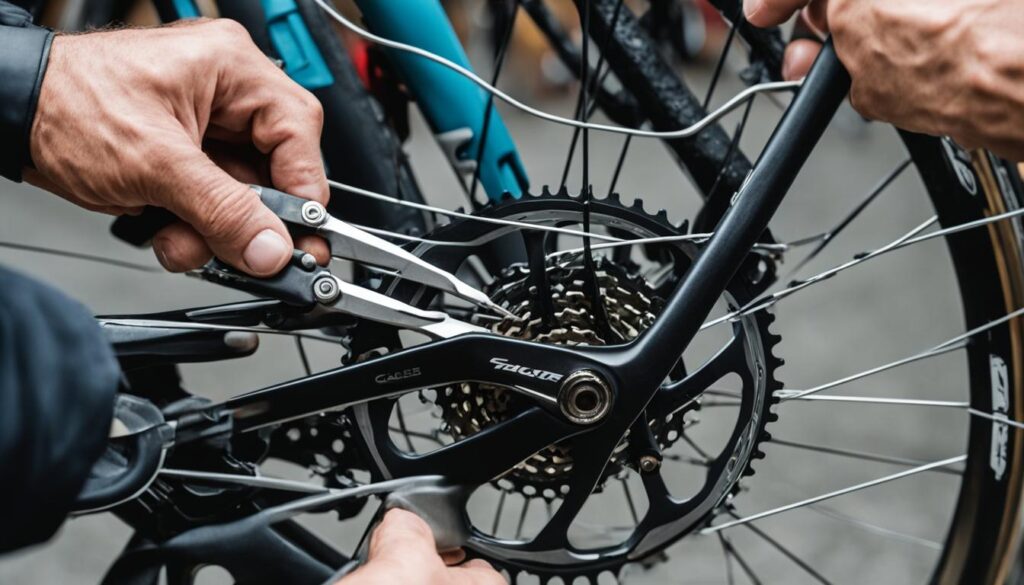
By following these essential tips for cable maintenance, you can ensure that your bike’s gears shift smoothly and your brakes respond reliably. Proper cable care contributes to a more enjoyable and safer riding experience. Take the time to inspect and maintain your cables regularly, and make any necessary replacements to keep your bike performing at its best.
Keep an eye on the bearings
Bearings in your bike play a crucial role in ensuring smooth and efficient operation. Proper maintenance and regular checks can extend their lifespan and prevent unnecessary wear and tear. Here are some tips to keep your bearings in optimal condition:
- Bearing Maintenance: Regularly inspect the condition of your bike’s bearings, paying special attention to the lower headset bearing and non-driveside bottom bracket bearing. Look for any signs of damage, wear, or excessive play. If you notice any issues, it’s important to address them promptly to prevent further damage.
- Bearing Lubrication and Greasing: Lubricating your bearings is essential to minimize friction and prevent damage. Use a high-quality grease suitable for bike bearings and apply it according to the manufacturer’s recommendations. Regular greasing helps to maintain smooth operation and prolong the lifespan of your bearings.
- Bearing Prising: In some cases, it may be necessary to carefully prise off certain bearings for cleaning and regreasing. This can be done using appropriate tools and techniques, ensuring that the bearings are handled with care to avoid any damage.
- Frame Bearing Maintenance: If your bike has frame bearings, such as those found in full-suspension mountain bikes, it’s important to include them in your regular maintenance routine. Clean and regrease these bearings as recommended by the manufacturer to ensure optimal performance and longevity.
- Consider Higher-Quality Bearings: Investing in higher-quality bearings can offer several benefits, including longer lifespan and improved performance. Quality bearings are typically designed to withstand more demanding conditions and provide smoother operation for a longer period of time. Consider upgrading to higher-quality bearings when replacing worn-out or damaged ones.
Maintaining and taking care of your bike’s bearings is an essential part of bike maintenance. Regular checks, lubrication, and greasing can help prevent premature wear and ensure that your bike runs smoothly and efficiently.
Bearing Maintenance Process:
| Step | Description |
|---|---|
| 1 | Inspect the condition of bearings, focusing on the lower headset bearing and non-driveside bottom bracket bearing. |
| 2 | If necessary, carefully prise off the bearings for cleaning and regreasing. |
| 3 | Apply a high-quality grease suitable for bike bearings according to the manufacturer’s recommendations. |
| 4 | Reinstall the bearings and ensure they are properly seated. |
| 5 | Test the bearings by rotating the relevant components to ensure smooth operation. |
Give your Suspension Some TLC
Suspension plays a crucial role in your bike’s performance and comfort. To ensure that your suspension system continues to perform optimally, regular maintenance is key. Follow these essential tips to give your suspension the care it deserves:
- Suspension Servicing: Regularly servicing your suspension is essential for preventing damage and maintaining its performance. Consult the manufacturer’s guidelines or seek professional help to determine the recommended service intervals.
- Shock and Fork Maintenance: Regularly inspect your shock and fork for any signs of wear, damage, or leaks. If you notice any issues, consult a professional for a thorough inspection and necessary repairs.
- Suspension Fluid and Seal Refresh: Over time, the fluid in your suspension system can break down, affecting its performance. Refresh the suspension fluid and replace seals as recommended by the manufacturer to maintain optimal performance.
- Suspension Stanchion Cleaning: The stanchions of your suspension system can accumulate dirt, debris, and grime, which can cause damage if not properly cleaned. Regularly wipe down the stanchions with a clean cloth to remove any contaminants.
By following these maintenance practices and adhering to recommended service intervals, you can ensure that your suspension system remains in top condition, providing you with a smooth and comfortable ride.
Remember, a well-maintained suspension system not only improves your riding experience but also enhances your safety on the trails.
Regularly replace your bar tape
Regularly replacing your handlebar tape is an essential maintenance task that not only ensures a comfortable grip but also prolongs the lifespan of your handlebar, especially if it is made of aluminum. Over time, the sweat from your hands can cause corrosion on aluminum handlebars, leading to potential failure and compromising your safety on the bike.
To prevent corrosion and maintain the integrity of your handlebars, it is important to inspect them periodically when replacing the bar tape. Look for any signs of oxidation or damage on the handlebar surface, paying close attention to areas where sweat is likely to accumulate. This proactive approach allows you to catch any potential issues early and take the necessary steps to address them.
When it comes to choosing handlebar tape, cork tape is a popular option due to its excellent shock-absorbing properties and comfortable feel. Additionally, cork tape is easy to replace in case of handlebar replacement or changes in shifter position, as it doesn’t leave adhesive residue behind.
For optimal maintenance, it is recommended to replace your bar tape once or twice a year, depending on your riding frequency and environmental conditions. Frequent riders or indoor cyclists who generate more sweat may need to replace it more often.
Regularly replacing your handlebar tape is a simple and cost-effective way to ensure a secure and comfortable grip while prolonging the lifespan of your handlebar.
Avoid Swapping Tires
When it comes to maintaining your bike tires, swapping them may seem like a convenient solution. However, it’s important to understand that regularly inspecting your tires for debris and performing necessary maintenance tasks can help extend their lifespan and prevent potential issues. Let’s explore why avoiding tire swapping is beneficial for your bike’s performance and longevity.
The Importance of Tire Debris Removal
Inspecting your tires regularly is essential for removing any debris that may be lodged in the tire carcass. Debris such as small stones, glass shards, or thorns can cause punctures or tears, compromising the tire’s integrity. By removing these debris, you reduce the risk of flat tires and extend the overall lifespan of your tires.
Avoiding Front and Rear Tire Swapping
Another aspect to consider is the grip of your tires. The front tire plays a crucial role in maintaining control and steering, especially when cornering or navigating tricky terrain. Swapping the front and rear tires can lead to decreased grip at the front, compromising your bike’s stability and handling. It’s recommended to keep the tires in their respective positions to ensure optimal grip and overall performance.
Consider Buying Three Tires
Instead of buying a pair of tires, consider purchasing three tires. This allows you to have a spare tire specifically for the rear when it wears out. By having a spare tire readily available, you can quickly replace the worn-out one, minimizing downtime and ensuring consistent performance on your rides.
A Note on Tire Lifespan
While proactive maintenance practices can help extend tire lifespan, it’s important to note that tire wear is influenced by various factors. Riding conditions, terrain, tire quality, and riding style can all impact the rate at which tires wear out. Some riders may find that the front tire wears out faster, while others may experience more wear on the rear tire. Understanding these variables can aid in making informed decisions about tire replacement and overall bike maintenance.
| Tire Maintenance Tip | Benefits |
|---|---|
| Regularly inspect tires for debris | Prevents punctures and tears |
| Avoid swapping front and rear tires | Maintains optimal grip and bike stability |
| Consider buying three tires | Ensures a spare for the worn-out rear tire |
By following these tire maintenance tips, you can enhance your biking experience and prolong the lifespan of your tires. Remember to prioritize regular inspections, debris removal, and consider having a spare tire for seamless replacements. With proper care and attention, your bike tires will continue to provide the necessary grip, maneuverability, and durability for your rides.
Conclusion
Choosing the right bike tires is essential for optimizing your ride’s performance, ensuring your safety, and enhancing your overall enjoyment. When selecting tires, it is crucial to consider the type of terrain you will be riding on, as this will determine the most suitable tread patterns, compounds, and bead types.
In addition to considering tread patterns and compounds, choosing tubeless tires can offer several advantages. Tubeless tires allow for lower tire pressure, providing a more comfortable ride and increased traction on various surfaces. Moreover, they eliminate the risk of pinch flats, enhancing the safety of your ride.
For riders seeking a wide range of tire options, WTB offers an extensive tire range designed for different adventure styles. Whether you’re tackling rugged mountain trails or cruising along smooth city streets, WTB has a tire to meet your needs. Their commitment to quality and innovation ensures that you’ll find the perfect tire to match your riding style and terrain.
Ultimately, selecting the right bike tires will make every ride more enjoyable and memorable. So take the time to research and choose tires that align with your riding preferences and the terrain you’ll be exploring. By prioritizing tire performance, safety, and fun, you’ll be well-equipped for all your biking adventures.
FAQ
How often should I clean my bike?
It is recommended to clean your bike at least once a week in the summer and after every ride in the winter to keep the components running smoothly and increase their lifespan.
What is the proper way to clean my bike?
Start by wetting the bike, clean the chain, and then clean the rest of the bike using a specific bike cleaner. Dry the bike and lubricate the chain to prevent rust.
How often should I maintain my chain?
Regularly cleaning and maintaining your chain is crucial for its longevity and the lifespan of other components on your bike. Use a chain degreaser and chain lubricant suitable for the weather conditions. Check the chain’s wear regularly with a chain checker and replace it when necessary to prevent damage to the cassette and chainrings.
How often should I check my brake pads?
It is important to regularly check the remaining pad material on your brake pads to prevent premature wear on disc brake rotors or the wheel’s braking surface. Clean the braking surface and remove any dirt or debris from the brake pads for optimal performance. Avoid contaminating disc brake pads with oily substances to prevent diminished braking performance.
How should I look after my cables?
Proper maintenance of gear and brake cables is essential for optimal performance. Use dry lube on exposed sections of the cables and replace them if there is fraying or damage. Consider upgrading to higher-quality cables for longer lifespan and smoother operation. Replace the inner cable regularly, especially in all weather conditions. Consider fully sealed cables for bikes with external cable routing.
How often should I lubricate and grease the bearings?
The bearings in your bike require periodic lubrication to prevent wear. Check the condition of the bearings regularly and regrease them as needed. Pay special attention to the lower headset bearing and non-driveside bottom bracket bearing. Some bearings can be carefully prised off, cleaned, and regreased. Consider investing in higher-quality bearings for longer lifespan, especially for full-suspension mountain bikes.
How often should I service my suspension?
Regularly servicing your suspension is important to prevent damage and keep it functioning optimally. Wipe down the suspension stanchions regularly to prevent damage from grit and grime. Follow the recommended service intervals provided by the suspension manufacturer to know when to service your fork or shock.
When should I replace my handlebar tape?
Regularly replacing your handlebar tape ensures a comfortable grip and prolongs the lifespan of the handlebar, especially for aluminum ones. Sweat can cause corrosion on aluminum handlebars, leading to failure. Inspect the handlebar periodically when replacing the tape to prevent oxidation. Choose cork tape without adhesive for easy replacement in case of handlebar replacement or shifter position change. Replace the tape once or twice a year, especially for frequent riders or indoor cyclists.
Can I swap my tires?
It is not recommended to swap tires between the front and rear regularly as it can lead to decreased grip at the front, where it is essential. Instead, regularly inspect your tires for debris and remove anything lodged in the tire carcass to prevent punctures and tears. Consider buying three tires instead of a pair to have a spare for the rear when it wears out. However, there is an element of pot luck involved in tire wear.
How do I choose the right bike tires?
Choosing the right bike tires is crucial for performance, safety, and enjoyment. Consider the terrain you’ll be riding on and select tires with appropriate tread patterns, compounds, and beads. Tubeless tires offer benefits like lower pressure without the risk of pinch flats. WTB offers a range of tires for different adventures. Make every ride unforgettable by picking the perfect tire for your style and terrain.
